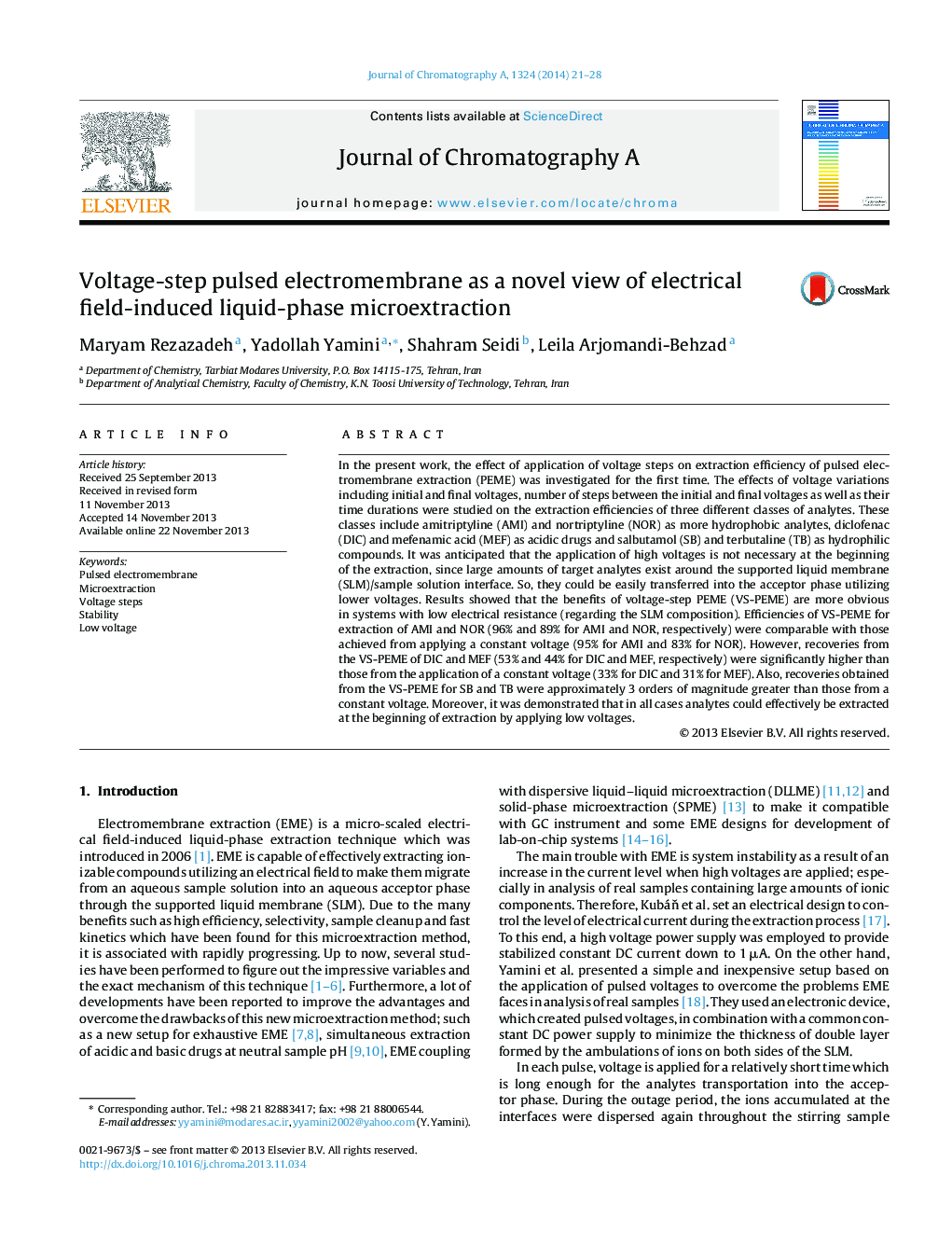| Article ID | Journal | Published Year | Pages | File Type |
|---|---|---|---|---|
| 7613834 | Journal of Chromatography A | 2014 | 8 Pages |
Abstract
In the present work, the effect of application of voltage steps on extraction efficiency of pulsed electromembrane extraction (PEME) was investigated for the first time. The effects of voltage variations including initial and final voltages, number of steps between the initial and final voltages as well as their time durations were studied on the extraction efficiencies of three different classes of analytes. These classes include amitriptyline (AMI) and nortriptyline (NOR) as more hydrophobic analytes, diclofenac (DIC) and mefenamic acid (MEF) as acidic drugs and salbutamol (SB) and terbutaline (TB) as hydrophilic compounds. It was anticipated that the application of high voltages is not necessary at the beginning of the extraction, since large amounts of target analytes exist around the supported liquid membrane (SLM)/sample solution interface. So, they could be easily transferred into the acceptor phase utilizing lower voltages. Results showed that the benefits of voltage-step PEME (VS-PEME) are more obvious in systems with low electrical resistance (regarding the SLM composition). Efficiencies of VS-PEME for extraction of AMI and NOR (96% and 89% for AMI and NOR, respectively) were comparable with those achieved from applying a constant voltage (95% for AMI and 83% for NOR). However, recoveries from the VS-PEME of DIC and MEF (53% and 44% for DIC and MEF, respectively) were significantly higher than those from the application of a constant voltage (33% for DIC and 31% for MEF). Also, recoveries obtained from the VS-PEME for SB and TB were approximately 3 orders of magnitude greater than those from a constant voltage. Moreover, it was demonstrated that in all cases analytes could effectively be extracted at the beginning of extraction by applying low voltages.
Keywords
Related Topics
Physical Sciences and Engineering
Chemistry
Analytical Chemistry
Authors
Maryam Rezazadeh, Yadollah Yamini, Shahram Seidi, Leila Arjomandi-Behzad,
